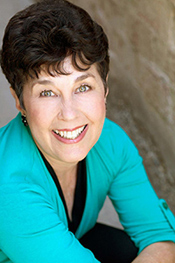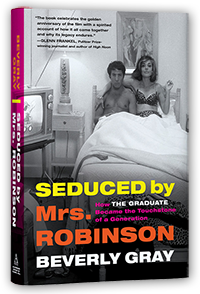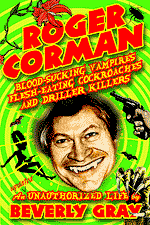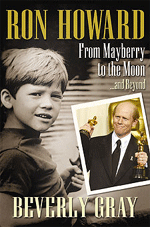As a former English major, I couldn’t resist going to see the new version of Jane Eyre, starring Mia Wasikowska and Michael Fassbender. For those who can accept movies without a single bare breast or car crash, it’s a rare treat: beautifully filmed, beautifully performed, faithful to the spirit of the nineteenth-century original. One special pleasure for me was realizing that Jane, for all of her prim Victorian ways, is a strikingly modern young woman. Despite her low-key manner, she always makes do, for the simple reason that she’s smart, she’s tough, and she knows her own mind. Self-respect and self-reliance are essential parts of her character. And, although she’s never less than conventionally proper, it’s quite clear in Wasikowska’s performance that the fires of passion burn within.
Jane Eyre tells the story of a young governess who gets far more than she bargained for when she reports for work at a musty old country manor. In fact, it’s easy to see Charlotte Bronte’s 1847 novel as part of the long tradition of haunted house stories, in which something (or someone) lurks in the shadows, ready to strike when least expected.
Roger Corman paid homage to this same tradition in 1960, when he adapted “The Fall of the House of Usher,” an eerie short story by Edgar Allan Poe. House of Usher, the lead-off film in Corman’s ambitious (if bargain-basement) Poe cycle for American International Pictures, vaulted Roger to a new level of critical respect, while also winning him fans among impressionable teenagers worldwide. In 2005, House of Usher became the only Corman feature to be welcomed into the National Film Registry, a project of the Library of Congress. I had the pleasure of breaking that news to Roger myself: it was a great day for his enduring legacy.
While shooting his Poe films, Corman was discovering Sigmund Freud. Haunted house movies, from Roger’s Freud-infused perspective, capture a child’s fear of the unknown, symbolizing a tiny tot alone in the darkness, confounded by the mystery of what’s happening behind his parents’ locked door. When interviewed by my former colleague Adam Simon for an Italian TV documentary, Roger stretched this idea even further. For Adam’s camera, Roger wandered through the dark, decrepit Concorde studio, lantern in hand, solemnly intoning: “To me the house is a woman’s body. The hallways, the stairways, the corridors are the vagina. I as a teenaged boy am immensely desirous of penetrating those hallways, yet at the same time I am a little bit fearful about the journey.”
The Freudian explanation helps me understand the attractiveness of horror films to postpubescent audiences (though heaven knows I’ve never been a teenage boy!). Still, there’s another reason that low-budget filmmakers love haunted house movies. In a nutshell, they’re cheap to shoot. Just one big set, with lots of nooks and crannies, and little need for a cast of thousands. Add some things that go bump in the night, and you’re good to go.








I have fond memories of catching Corman's Poe films on Shock Theater and the ABC Late Movie on weekends. As interchangeable as they may be, they offer lots of visual sustenance for hungry horror fans. One of my fondest childhood memories was seeing THE RAVEN (1963) for the first of many times. It's one of my all time favorite movies. I remember I used to watch that film almost once a day back then in the early 80s.
ReplyDeleteIt's fascinating how many of today's great filmmakers grew up on the Poe pictures. Martin Scorsese, for one, was entranced with The Tomb of Ligeia.
ReplyDeleteFor some reason, I didn't appreciate LIGEIA till much later. As a kid nearly all the other Poe films were attractive to me and they got regular airplay on ABC late at night and sometimes during the day on weekends.
ReplyDeleteMy very favorite of Roger's Poe films is "Masque of the Red Death," which -- though certainly lurid -- also has a real elegance along with (of course) a nice borrowing from Ingmar Bergman. Roger's sets were also borrowed: he was filming in London, and appropriated sets that had been used for the historical epic, "Becket." You can spot them in "Becket" as the backdrop for the Pope's court. In "Becket," they are on screen for only a few moments: leave it to Roger to build an entire production around them. (Someday I'll have to tell the story of the remake of "Masque," which occurred when I was Roger's story editor in the late Eighties.)
ReplyDeleteI hope you're making notations, Beverly, to keep up with all these additional behind the scenes stories! There's regularly a tangent or two accompanying nearly every post that promises extra enlightening details!
ReplyDeleteMASQUE is a classic. I think it's uniformly regarded as Corman's best of the Poe features. It also sports that mini tale, Hop frog in there, too, which provides some additional shock value.
Wow, I may have to watch all these again, at least up to LIGEIA. The AIP Poe's after that weren't as good in my opinion.
I love the Poe series - a great idea on Mr. Corman's part - to make one color feature for the regular cost of two of the black and white flicks - and with that he moved into another level of filmmaking - because with House of Usher - as you point out - there was more thought behind the movie than "how fast must I move to get this shot in five days?" There was always more in the ravioli after House of Usher in all of the AIP and New World pictures. Terrific post, Ms. Gray!
ReplyDeleteMany thanks, Mr. Edwards! Read on for lots more ravioli!
Delete